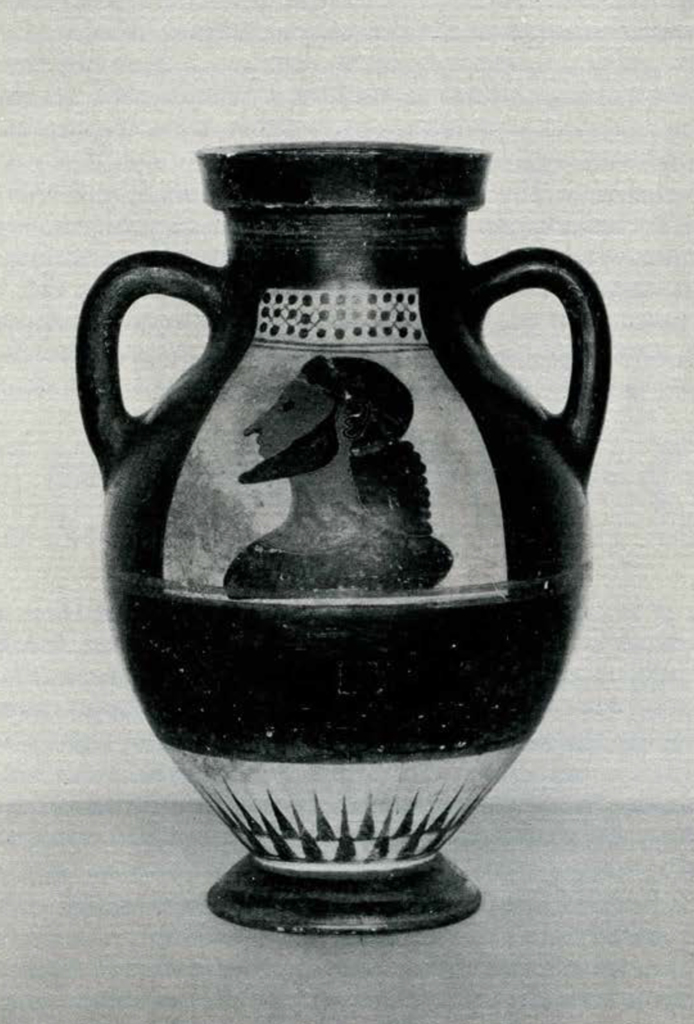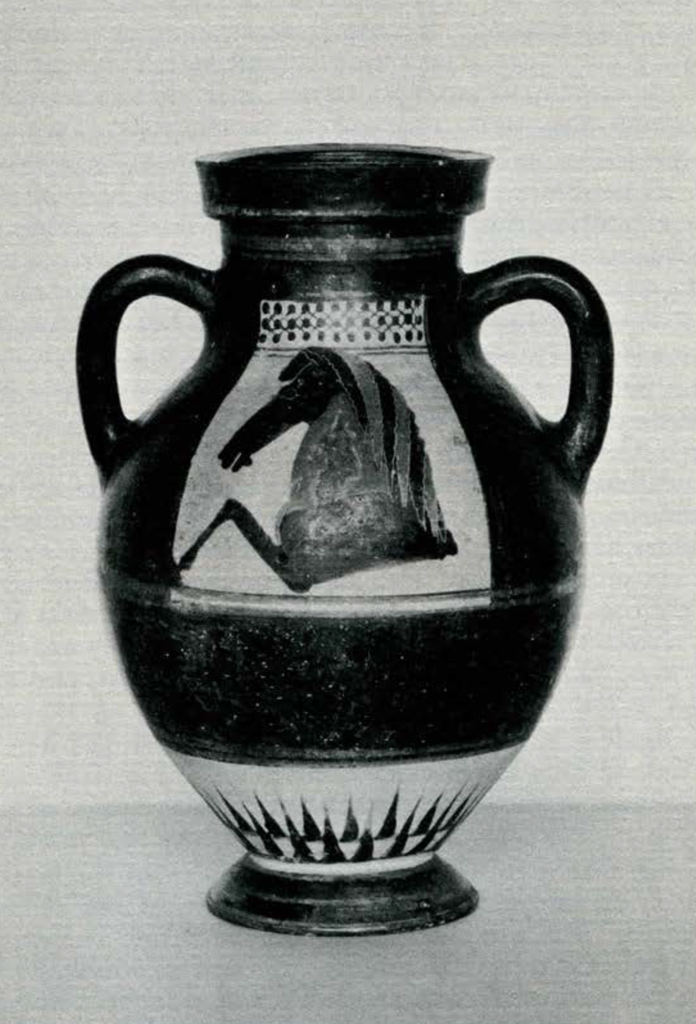
Museum Object Number: L-29-40
THE Museum has recently received on loan a collection of vases made by the late Hermann Hilprecht, one of the most interesting specimens of which is the amphora of Plates VIII and IX. Both the shape of the vase and the distribution of the ornament are noteworthy. It is more slender than most amphorae of the period; its handles merge less smoothly into the body of the vase; the outer profile of the lip approaches more nearly a perpendicular. The narrow panels invade the area of the neck and are embellished above by a net pattern in which white dots once figured among the dark. A narrow strip of the reserved ground is left showing between the two red lines which finish the picture below. Just above the fool is a pattern of rays which begin at different levels, but end, all of them, at the lower margin of the black zone which encircles the central part of the vase.

Museum Object Number: L-29-40
All of these characteristic features are repeated on an amphora in Heidelberg and again on a vase from the Hope collection, which, as scholars have recognized, are painted in a style quite different from that of Attic vases. This style may be studied to advantage in the pictures of our vase. In the obverse panel is a bust of a man, in the reverse the protome of a horse. Three colors are used; red for the flesh, black for the hair, beard, and garment, and white for the fillet which is wound twice about the crown of the head, and for the broader band which confines the hair at the nape of the neck. Incised lines are used for inner details. The drawing is done in the archaic manner associated with the early years of the sixth century B. C.; the nose is excessively long, the lips thick, the eye a large disk with arrow-like additions to represent the two corners. The ear is extremely large and the cartilage of the central part exaggerated. The same style may be recognized in some of the pinakes from Corinth in the Berlin Museum on which are inscriptions in the Corinthian alphabet. We may safely conclude, therefore, that our vase, like the two amphorae cited, is Corinthian. The drawing of the protome of a horse on the reverse of the vase confirms the conclusion, for two similar protomes of horses, confronting one another, constitute the decoration of a Corinthian plate in Munich.
As to the date, we cannot do better than to follow Payne in his Nekrokorinthia, who assigns the Heidelberg amphora to the Middle Corinthian period, 600-575 B. C.
When in 1837, the grave of Aristion was opened at Phaleron, an Attic amphora was discovered, on both reverse and obverse faces of which were painted protomes of horses, while inside it were found pieces of bone and ashes. The connection of the horse with the cult of the heroized dead is well established. It is quite possible, therefore, that our amphora was used for a similar purpose, and that the bust of the obverse panel had also some connection with the cult of the dead; but whether the picture was regarded as commemorative of the man who had died or of Pluto or Poseidon, whose dominion was below the earth, is by no means certain.
E. H. D.

